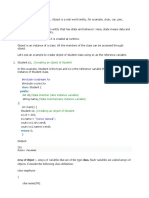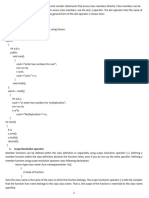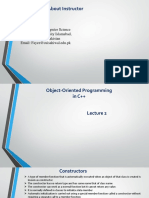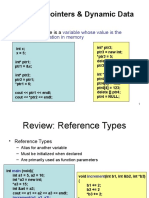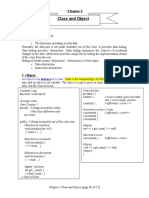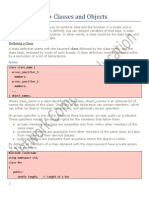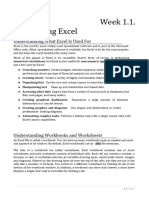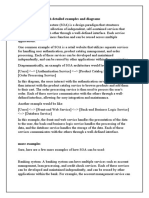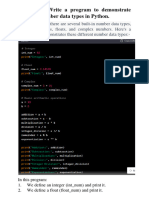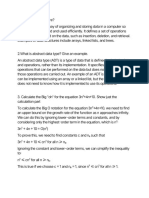0% found this document useful (0 votes)
6 views29 pagesClasses
The document provides an overview of classes in C++, covering topics such as class scope, member access, constructors, destructors, and memberwise assignment. It explains the purpose and characteristics of constructors and destructors, including default and parameterized constructors, as well as copy constructors. Additionally, it illustrates the use of access and utility functions, along with examples of class member access operators.
Uploaded by
aa.raxmanovvCopyright
© © All Rights Reserved
We take content rights seriously. If you suspect this is your content, claim it here.
Available Formats
Download as PDF, TXT or read online on Scribd
0% found this document useful (0 votes)
6 views29 pagesClasses
The document provides an overview of classes in C++, covering topics such as class scope, member access, constructors, destructors, and memberwise assignment. It explains the purpose and characteristics of constructors and destructors, including default and parameterized constructors, as well as copy constructors. Additionally, it illustrates the use of access and utility functions, along with examples of class member access operators.
Uploaded by
aa.raxmanovvCopyright
© © All Rights Reserved
We take content rights seriously. If you suspect this is your content, claim it here.
Available Formats
Download as PDF, TXT or read online on Scribd
/ 29








